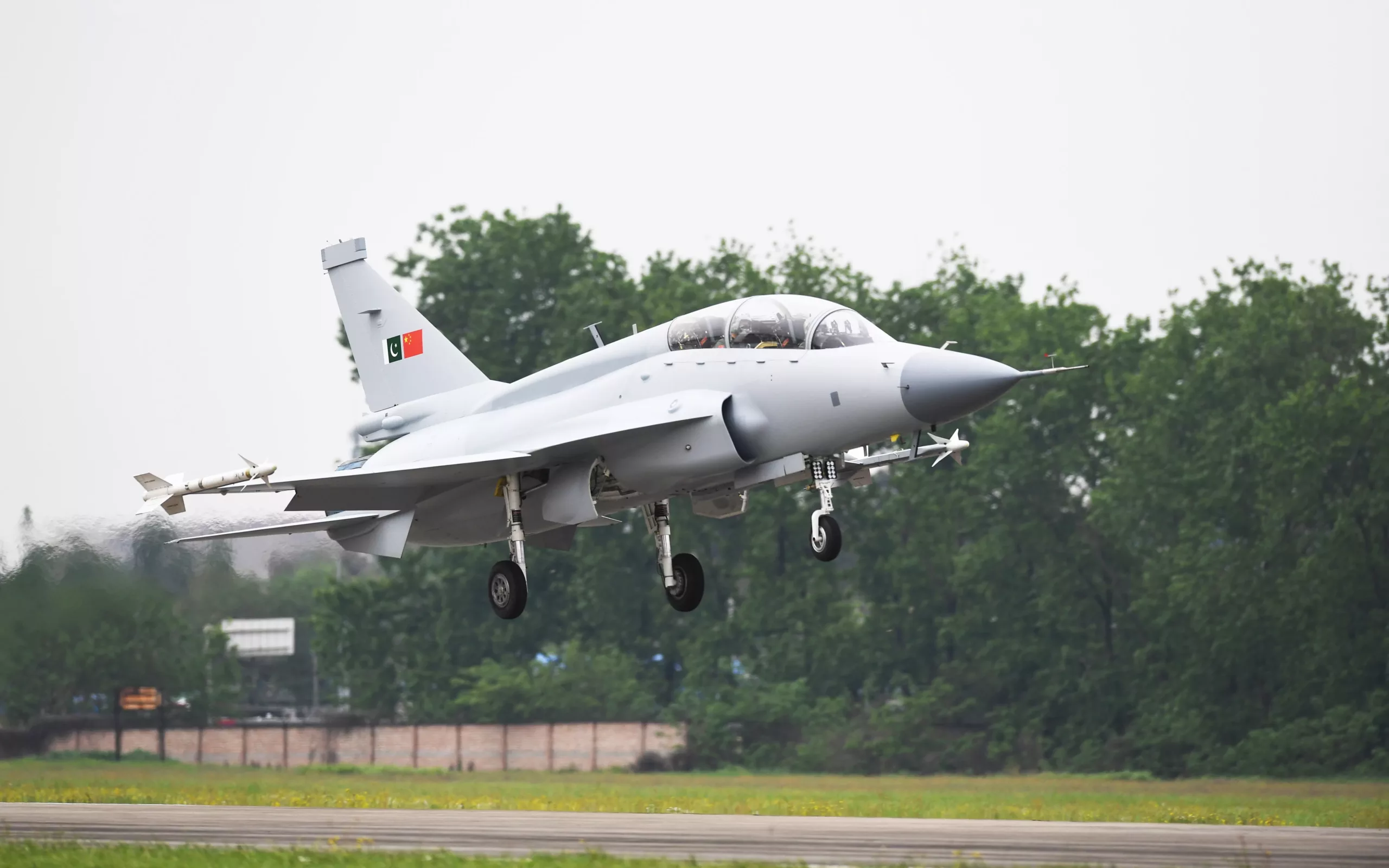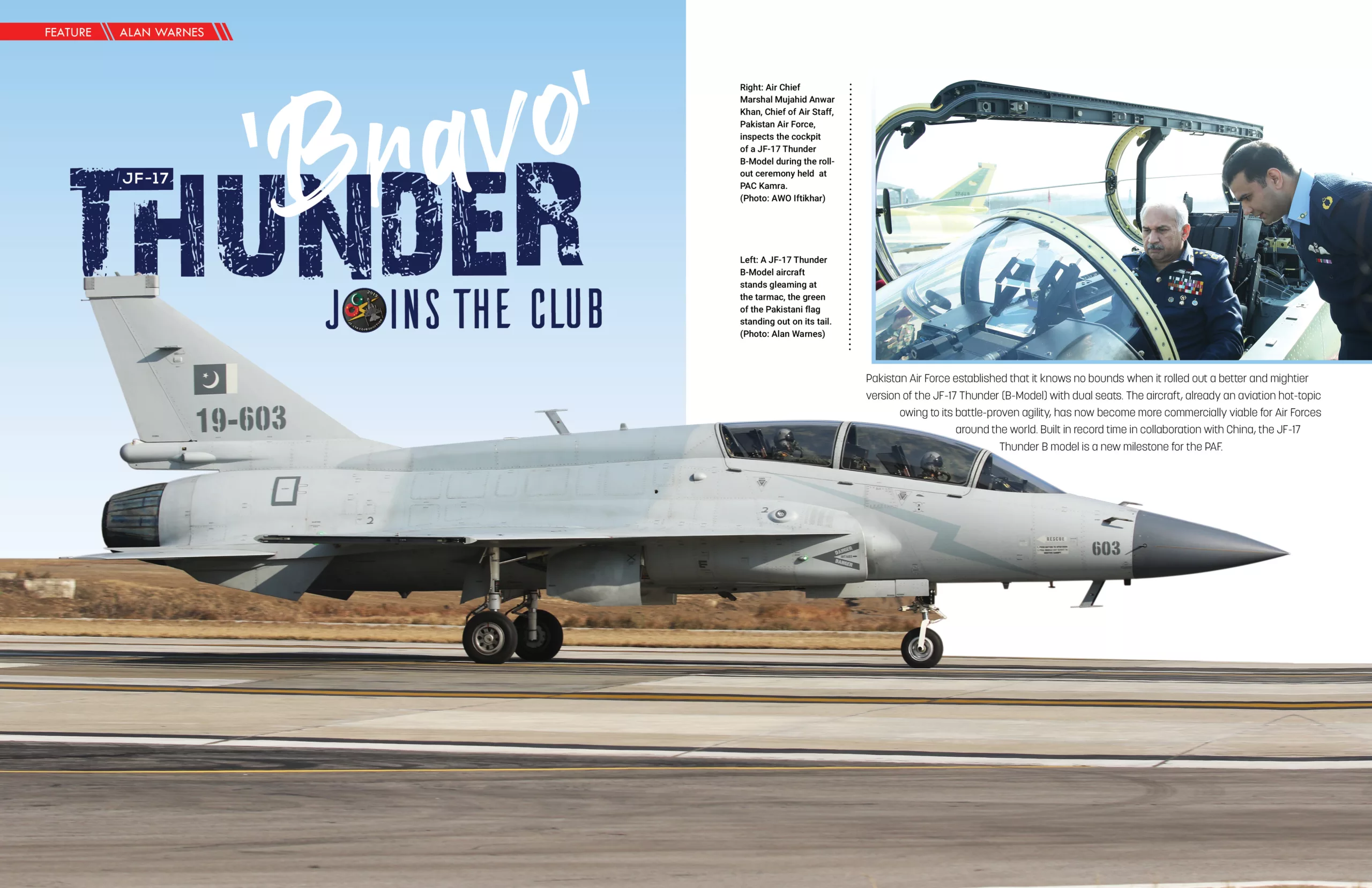Pakistan Air Force established that it knows no bounds when it rolled out a better and mightier version of the JF-17 Thunder (B-Model) with dual seats. The aircraft, already an aviation hot-topic owing to its battle-proven agility, has now become more commercially viable for Air Forces around the world. Built in record time in collaboration with China, the JF-17 Thunder B model is a new milestone for the PAF.
For years the PAF had always maintained that it had no need for a dual-seat Thunder. Whenever I spoke to key players in the JF-17 programmed, about such a variant I was always told there was no need. “We never had a two-seat A-5 and never needed dual seat F-6s, F-7s or F-7PGs until later. With a good simulator system in place it isn’t a priority.”
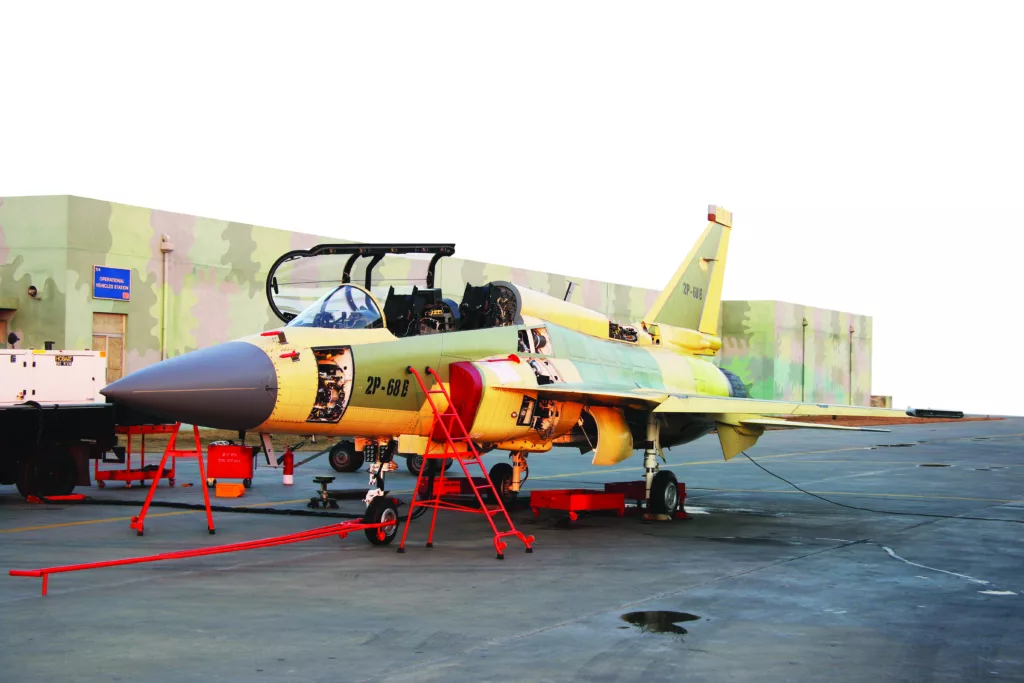
Then things changed. Unlike the above types, the Pakistan Air Force was responsible for designing the JF-17 from the outset, and with China National Aero-Technology Import & Export Corporation (CATIC) wanted to export it. Most air forces require a mission simulator system as well as a dual seater before pilots fly a single-seater version. The Egyptian Air Force Commander told me so much at Dubai Airshow in 2013, and others have expressed the same sentiment.
The synthetic training simulators, supplied by Spanish technology giant Indra have been operational with the PAF for over five years now. Indra has played a key role in the development of the Eurofighter simulation and was an ideal fit for the JF-17 full mission simulator. Today, there are three mission systems in operation at Minhas, Masroor and Peshawar, although it is likely that one will move to MM Alam when the base stands up the JF-17 OCU there. They have helped massively with the training of new JF-17 pilots, but according to the Pakistan Air Force Chief of the Air Staff, Air Chief Marshal Mujahid Anwar Khan, the JF-17B will streamline the JF-17 training process even further. “Current JF-17 pilots are being posted to Lockheed Martin F-16, Chengdu F-7PG or ROSE Dassault Mirage IIIEAs before converting to JF-17. But soon they will start going straight to a JF-17 OCU, after completing their advanced jet training. It will ensure pilots transitioning to the Sino-Pak jet, are a lot younger than they are now.” Pilots previously could not move to the JF-17 from the No 1 Fighter Conversion Unit, where they learnt the art of tactical fighter flying. Instead they needed to spend a couple of years gaining experience before they could move on to next stage.
The first flight of a dual-seat JF-17B, took place at Chengdu on April 27, 2017 which revealed several modifications to the aircraft’s airframe not seen in the single-seater. There is a dorsal spine, to house more fuel, to compensate for the space taken by the additional Martin Baker Mk 16 seat. While the swept tail houses a new three-axis fly-by-wire flight control system and the nose has been enlarged to accommodate the new KLJ-7A AESA radar when the time comes. Three aircraft were initially built at Chengdu Aircraft Corporation (CAC), two for the PAF and one for CATIC.
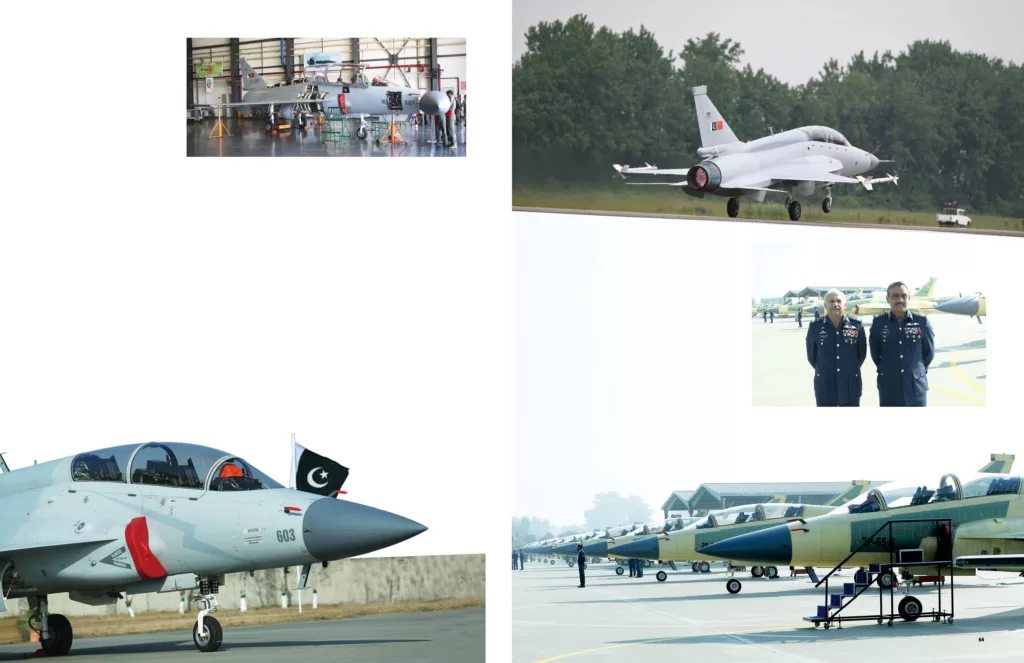
While the PLAAF has not ordered the JF-17, several countries have shown a key interest in a dual seat and single seater version. It means potential customers will have the chance to fly the aircraft and have a feel for it, rather than fly a simulator. CATIC is also helping with the test and development programme, including integration of weapons.
The dual-seater will also have the same operational capabilities as the single-seat JF-17A. By early 2019, one JF-17B had been delivered to the PAF, joined later in the year by a second then another two. While all this was going on, PAC Kamra was building eight JF-17Bs that rolled out in a ceremony held in the morning of 27th December, 2019. Chief of Air Staff of Pakistan Air Force, Air Chief Marshal Mujahid Anwar Khan was the chief guest at the historic occasion. Ambassador of People’s Republic of China, Yao Jing.
Executive Vice President, Aviation Industries of China (AVIC), Hao Zhaoping, were also in attendance as guests of honour. The most commendable aspect was that all aircraft were assembled inside five months! Later in the day, the Air Chief also inaugurated JF-17 Dual-Seat Integration facility at Avionics Production Factory, Kamra. The facility will enable PAF to integrate avionics and weapon systems of choice with JF-17 aircraft, ultimately providing much needed self-reliance and operational flexibility.
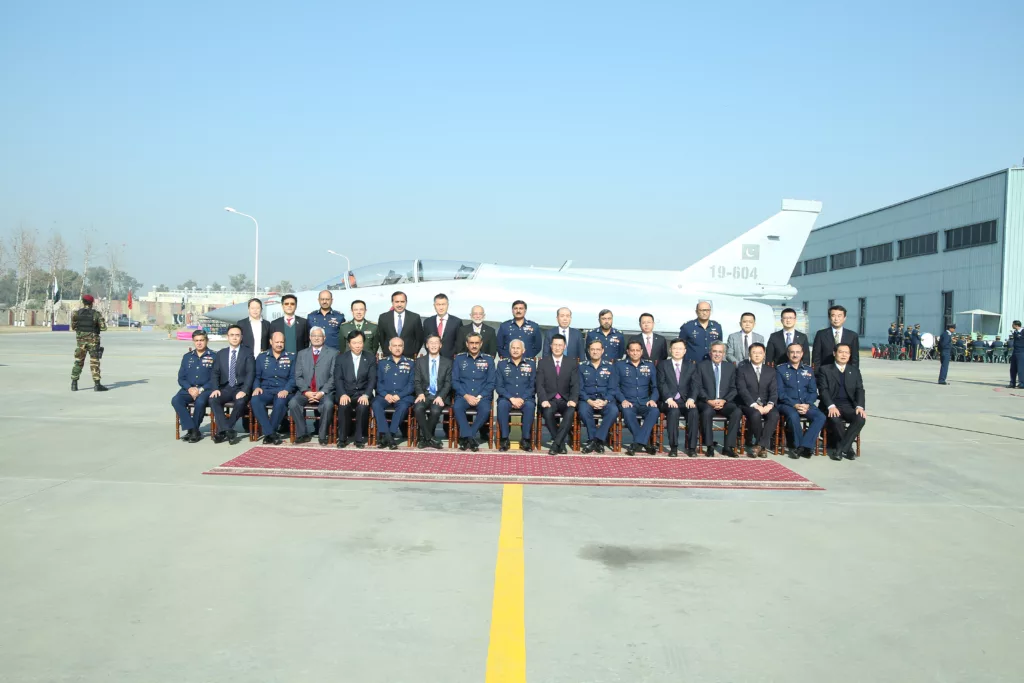
PAC Kamra builds a little bit less of the dual-seater than the single-seater because the new improvements and the cockpit section are designed in China. During the first few months of 2020, most of them were going through functional flight checks by the test pilots at AMF’s flight test shed. The CAS said, “Serial production of dual-seat variant is a landmark development for JF-17 program and a true manifestation of everlasting friendship between both the friendly countries. JF-17 Thunder is the backbone of PAF, and it has proven itself a force to reckon with during the Operation Swift Retort in February 2019”.
While it is very important to have dual seater JF-17s to help with the export drive and training, the PAF will undoubtedly turn the dual seater into a tactical aircraft too. There are 26 JF-17Bs on order, the former PAC Chairman, Air Marshal Ahmer Shahzad, told the author in April 2019 “We will assemble eight dual-seaters this year, followed by 14 in 2020 and the remaining four in 2021.”
The PAF Chief, Air Chief Marshal Mujahid Anwar Khan told the author in January 2020: “The JF-17B will fill the LIFT (Lead In Fighter Training) role in PAF but the JF-17 will fulfil both operational and training requirements, its performance and capability with the AESA radar means it can cover both. We are completely focussed and taking a professional approach with the new jets,” He continued: “All the front line squadrons will also have at least one to help with the operational training.” With the PAF know-how and the Chinese technological wizardry helping to shape the Thunder, the Sino-Pak fighter is heading into tactical capabilities that pioneers of the jet could only have dreamt of. Undoubtedly, the two-seater will one day fly with a laser designator pod too. It will be an attractive proposition for many third world or middle-east nations, and finally start to pick up some sizeable export orders. The export market is likely to play a bigger part in the JF-17’s success but to get there, it will need the continued drive and vision of both Pakistan and China.
